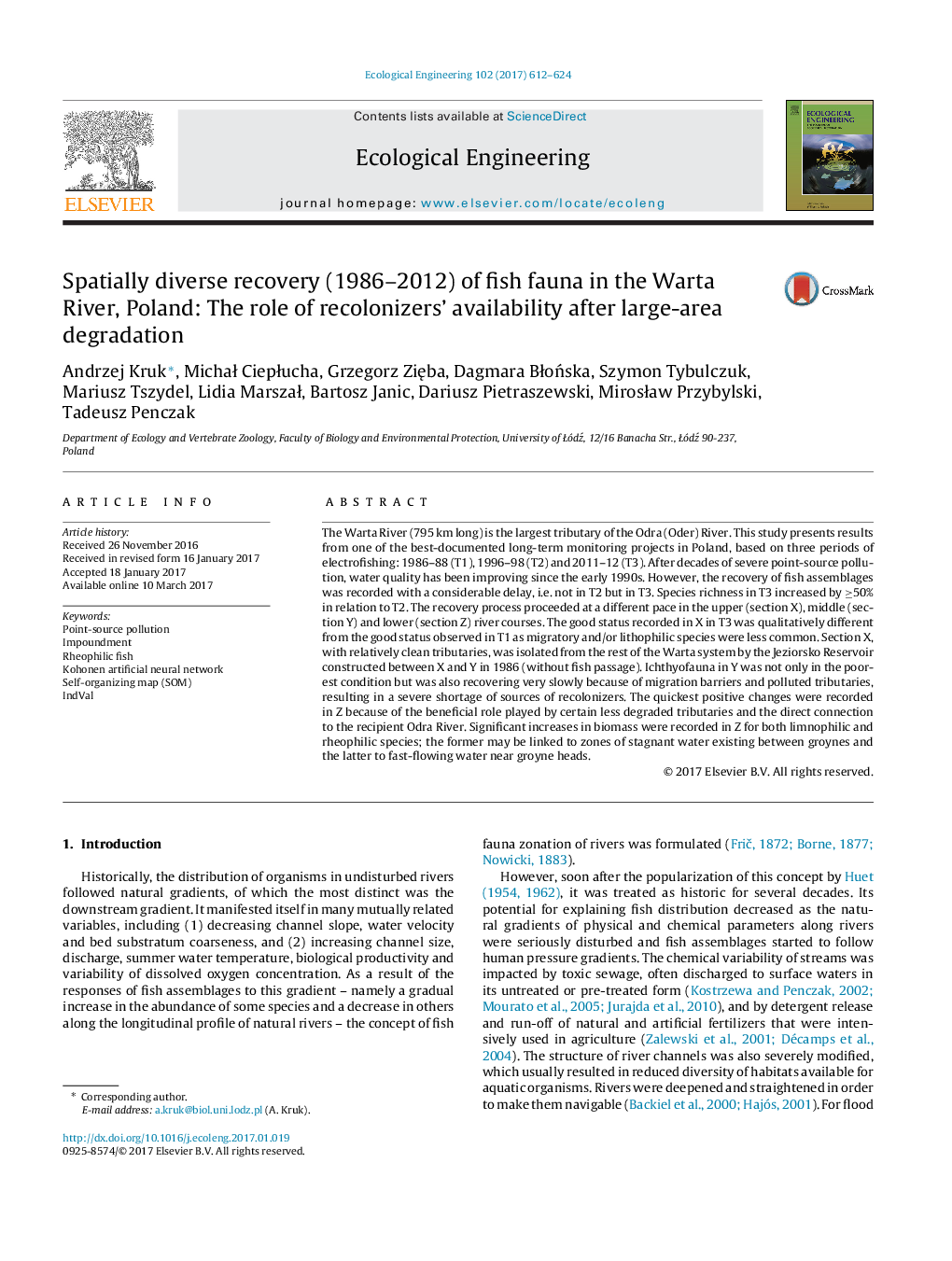| کد مقاله | کد نشریه | سال انتشار | مقاله انگلیسی | نسخه تمام متن |
|---|---|---|---|---|
| 5743808 | 1617997 | 2017 | 13 صفحه PDF | دانلود رایگان |

- This is one of the best-documented long-term fish monitoring projects in Poland.
- The recovery of ichthyofauna proceeded at a diverse pace along the Warta River.
- Migratory fish species were less common despite higher total species richness.
- Stream connectivity and diverse structure of habitats were crucial for recovery.
- Shortage of recolonizers resulted from migration barriers and polluted tributaries.
The Warta River (795 km long) is the largest tributary of the Odra (Oder) River. This study presents results from one of the best-documented long-term monitoring projects in Poland, based on three periods of electrofishing: 1986-88 (T1), 1996-98 (T2) and 2011-12 (T3). After decades of severe point-source pollution, water quality has been improving since the early 1990s. However, the recovery of fish assemblages was recorded with a considerable delay, i.e. not in T2 but in T3. Species richness in T3 increased by â¥50% in relation to T2. The recovery process proceeded at a different pace in the upper (section X), middle (section Y) and lower (section Z) river courses. The good status recorded in X in T3 was qualitatively different from the good status observed in T1 as migratory and/or lithophilic species were less common. Section X, with relatively clean tributaries, was isolated from the rest of the Warta system by the Jeziorsko Reservoir constructed between X and Y in 1986 (without fish passage). Ichthyofauna in Y was not only in the poorest condition but was also recovering very slowly because of migration barriers and polluted tributaries, resulting in a severe shortage of sources of recolonizers. The quickest positive changes were recorded in Z because of the beneficial role played by certain less degraded tributaries and the direct connection to the recipient Odra River. Significant increases in biomass were recorded in Z for both limnophilic and rheophilic species; the former may be linked to zones of stagnant water existing between groynes and the latter to fast-flowing water near groyne heads.
Journal: Ecological Engineering - Volume 102, May 2017, Pages 612-624